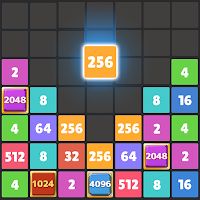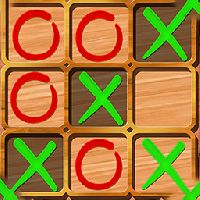SIMILAR GAMES
Description
Game Description:
Dots and Boxes is a classic paper-and-pencil game that’s easy to learn but challenging to master. Players take turns drawing lines to connect dots on a grid, trying to create boxes and claim them as their own. The game requires strategic thinking, pattern recognition, and a bit of luck.
How to Play:
- Start by drawing a grid of dots, usually 4x4 or 5x5. You can use a piece of paper or a digital tool to create the grid.
- Players take turns drawing lines to connect adjacent dots (horizontally, vertically, or diagonally).
- When a player completes a box by drawing a line that closes it, they get to write their initials inside the box.
- The game continues until all possible boxes have been claimed.
- The player with the most boxes wins!
Full Details:
Objective:
The objective of the game is to create as many boxes as possible and claim them by writing your initials inside.
Gameplay:
- Drawing Lines: Players take turns drawing lines to connect adjacent dots. You can draw a line to connect two dots that are not already connected by another line.
- Completing Boxes: When a player draws a line that closes a box, they get to claim it by writing their initials inside. The box is considered complete, and the player gets to add to their score.
- Blocking Opponents: Players can try to block their opponents from completing boxes by drawing lines that limit their options or create new possibilities for themselves.
- Strategic Thinking: Dots and Boxes requires strategic thinking and planning ahead. Players need to consider the possibilities and limitations of each move, as well as the potential consequences of blocking their opponents.
Tips and Strategies:
- Start with Short Lines: Begin by drawing short lines to connect nearby dots. This allows you to create small boxes and limit your opponents’ options.
- Focus on Corners: Corners are the most valuable areas of the grid, as they can be used to create multiple boxes. Try to draw lines that create corners or limit your opponents’ ability to do so.
- Block Opponents: Pay attention to your opponents’ moves and try to block their opportunities to create boxes. This can help you gain an advantage and limit their scoring potential.
- Think Ahead: Anticipate the possibilities and limitations of each move, and plan your next steps accordingly.
Variations:
- Different Grid Sizes: You can play Dots and Boxes with different grid sizes, such as 3x3, 6x6, or larger. The larger the grid, the more complex the game becomes.
- Multiple Players: You can play Dots and Boxes with multiple players, taking turns drawing lines and claiming boxes. The game becomes more challenging and strategic with more players.
- Timed Games: You can set a timer for a certain amount of time, and the player with the most boxes at the end of the timer wins. This adds an element of speed and urgency to the game.
Conclusion:
Dots and Boxes is a classic game that requires strategic thinking, pattern recognition, and a bit of luck. With its simple rules and addictive gameplay, it’s a great game for players of all ages and skill levels. So gather some paper, pencils, and friends, and start playing Dots and Boxes today!
















































